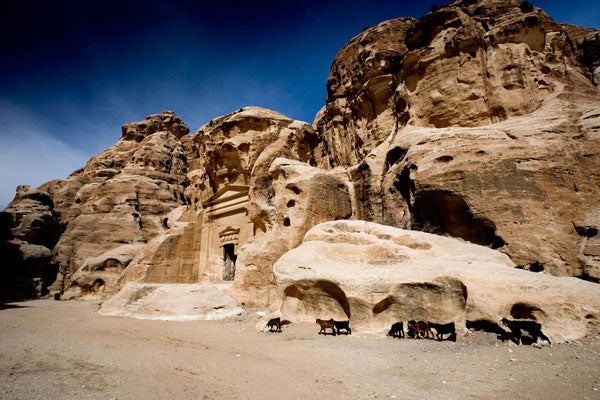On The Road: Bewildered on a Bedouin back-road en route to Petra

Your support helps us to tell the story
From reproductive rights to climate change to Big Tech, The Independent is on the ground when the story is developing. Whether it's investigating the financials of Elon Musk's pro-Trump PAC or producing our latest documentary, 'The A Word', which shines a light on the American women fighting for reproductive rights, we know how important it is to parse out the facts from the messaging.
At such a critical moment in US history, we need reporters on the ground. Your donation allows us to keep sending journalists to speak to both sides of the story.
The Independent is trusted by Americans across the entire political spectrum. And unlike many other quality news outlets, we choose not to lock Americans out of our reporting and analysis with paywalls. We believe quality journalism should be available to everyone, paid for by those who can afford it.
Your support makes all the difference.We were lost. John scanned the sea of sandstone that stretched out to the horizon and finally conceded defeat.
Somewhere within the vast pitted landscape of Wadi Arabah we had come unstuck. Just as the Bedouin tea-seller had told us, we should have taken a guide.
That morning, when we'd set out, our intention had been to hike the ultimate Bedouin back-road into Petra that begins near Al-Barid (or Little Petra as it's more commonly known). A suburb of Petra, Al-Barid features the same grand façades hewn into the rock face, but attracts only a handful of the visitors. Like its more famous sister-site it is cleverly concealed behind colossal sandstone cliffs.
Its creators, the wily Nabataeans, controlled a trade-route empire that stretched from Yemen to Syria and hid their cities from the world to defend against attack.
In Al-Barid we stopped for a sugar-laden tea, and told the tea-seller our plans. He shook his head and warned us against setting off alone. We shrugged off his well meaning advice, but two hours later we were simply walking in circles, unable to locate the start of the trail or find our way back to the site. Trapped amid wave after wave of weird and weathered rock formations, we were beginning to regret our gung-ho attitude. Two thousand years after their demise, the Nabataeans were still managing to outwit would-be invaders.
Salvation finally arrived as we stood on a rock outcrop, surveying the surroundings for familiar landmarks. Spotting us looking baffled and disoriented, 14-year-old Ahmed arrived grinning on our perch. After laughing at our plight, he agreed to lead us back to Al-Barid's entrance by a short cut he knew.
Half an hour later, having scaled a rock face, jumped off a large ledge and clambered across a narrow exposed ridge, we were again safely drinking tea at Al-Barid.
"You need a guide?" the tea-seller asked, trying to stop his mouth twitching into an "I-told-you-so" smile. I looked out at the landscape and marvelled at the ingenuity of the Nabataeans who had secreted their cities within it. "Yes," I said. "I think we do."
Footprint's Jordan Handbook is available mid-August (£15.99).
Join our commenting forum
Join thought-provoking conversations, follow other Independent readers and see their replies
Comments